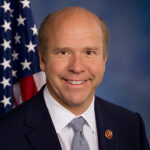U.S. Criminal Justice System in 2020
Andrew Yang, a popular Democratic candidate, observed that the rates of incarceration in the U.S. are four times higher than in most advanced countries. He also said that the criminal justice system is in dire need of reform as the system takes a harsher action against blacks and other minorities. President Trump’s campaign website says that he signed Executive Order 13809 to maintain State and local law enforcement’s access to surplus equipment from the Defense Department, like armored vehicles. Sen. Bernie Sanders, on the other hand, said that instead of spending $80 billion every year on jails, more investment should be made in jobs and education.
A special report from the United Nations from 2016 found that 80,000 to 100,000 people are kept in solitary cells in the U.S. on any given day, and almost 20 percent of prisoners and 18 percent of jail inmates end up spending time in solitary cells for over a year. Recently, the psychiatric research community has been able to find concrete evidence on the highly detrimental effects that long-term social isolation can bring to incarcerated people.
The president exercises a great deal of authority over the use of solitary confinement in the federal system through the attorney general, who can get the Bureau of Prisons to implement broad administrative reforms. The Obama administration tried to curb this when it ordered a ban on juvenile solitary confinement in 2016.
Many researchers said the most crucial thing a president can do, outside policy, is to be a “moral leader” on this sociological issue. Obama not only implemented a justice department review of the practice in 2015 but also took up the issue passionately in op-eds and debates. A president could also encourage reforms at the state and local level by using federal funding as a mechanism. Experts on this subject stated that the federal government could pressure states to follow the example of Colorado, which is the only one to adopt the United Nations’ Nelson Mandela rule, which classifies the holding of a prisoner in solitary confinement for over 15 days as torture.
Back in 1974 (Wolff v. McDonald), the courts had generally held that if solitary confinement is being used as a punishment, it requires a streamlined process, such a disciplinary hearing where the inmate gets a chance to present evidence. Due to this, prison officials commonly place inmates in segregation as an administrative matter instead. In Texas, for instance, affecting less than 2% of prisoners in confinement. The other 98%, held “administratively,” were not covered by the legislation.
Conclusion
With the country’s rates of incarceration four times more than that of almost every developed country, there is a great need for prison reforms that would bring down these staggering numbers. Many experts believe that imparting the right professional training to inmates can transform them into productive citizens who can positively contribute toward’s the nation’s economy.


















